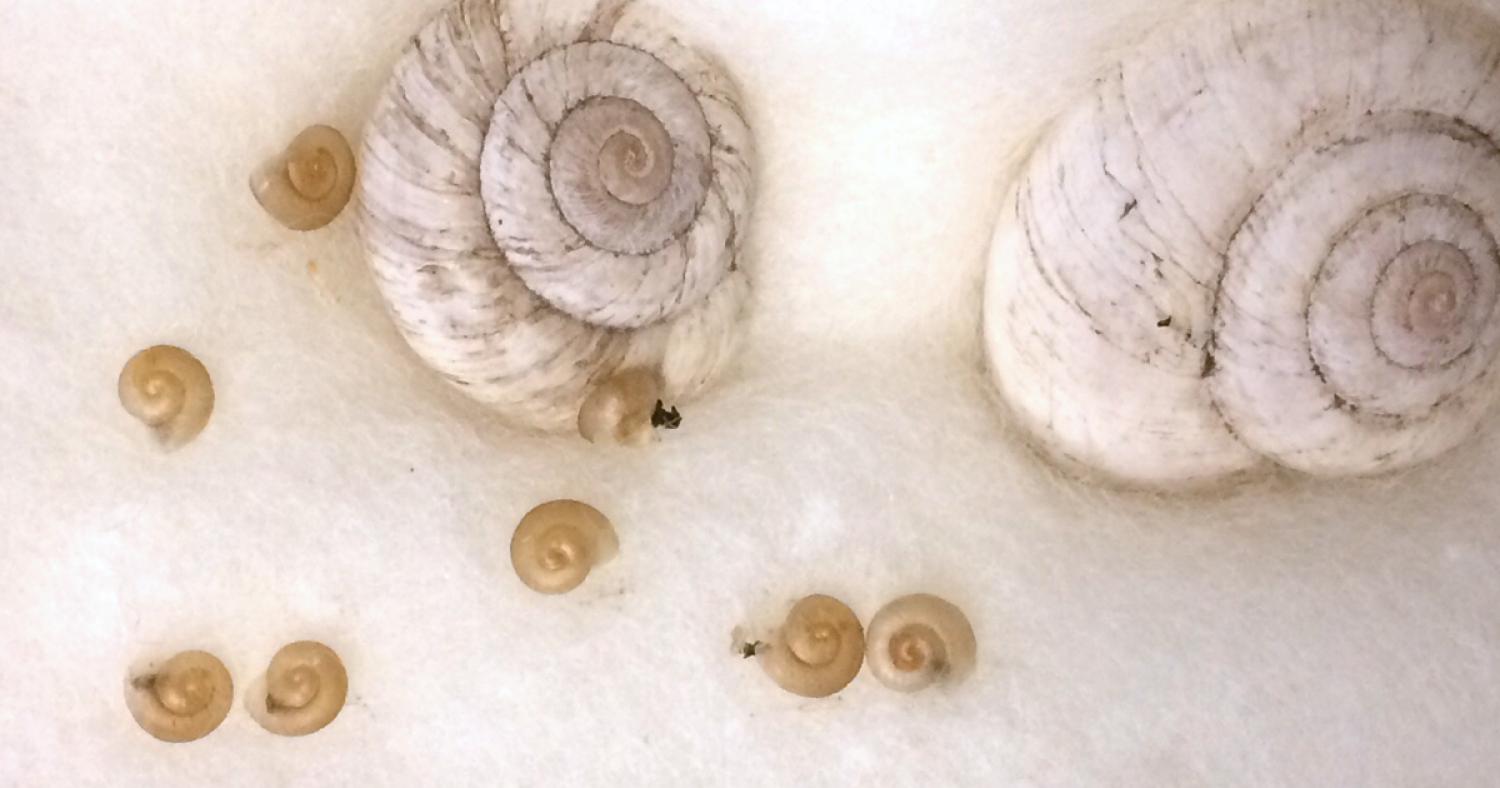The CU Museum is closed we will be opening early in the spring semester.
During this time, collection visits will be available by appointment and other special access requests will be considered on a case-by-case basis.
Please email cumuseum@colorado.edu for more information.
Rocky Mountain Snail
The Rocky Mountain snail is a species of land snail common throughout North America's Rocky Mountains but is one of 40 varieties endemic to Colorado. These shelled gastropods are identified by their low to moderately well elevated spire relative to their size. These particular snails have sinistral shells, meaning they coil counter-clockwise. The names of the directions that shells coil are dextral for right-handed (clockwise) and sinistral for left-handed (counterclockwise)–these are the same roots for the words dexterous and sinister.
This specimen was collected in 1915 by the founder of the CU Museum, Junius Henderson, who believed this variety of Oreohelix is a unique variant. Henderson specialized in molluscs, specifically snails. When this specimen was preserved, the researcher (presumably Henderson) dissected the specimen for preservation within our collection and found that the embryos were preserved with these snail specimens. What may strike you as unique is that the embryos and the adult Oreohelix shells spiral in opposite directions. Researchers believe a number of abiotic factors, meaning physical instead of biological, contribute the direction in which shells spiral. Oreohelix snails are ovoviviparous, which means their eggs hatch in the uterus and continue developing before they are born. While an inch might not seem large for a snail, the embryos preserved in this image tell another tale.
The Rocky Mountain snail is medium to large, with adults varying from 15-25 mm (0.6-1 in)2. While these gastropods are common in rocky foothills, coming across one is unlikely unless you’re shuffling through the decomposing matter near trees. This gastropod is detritivorous, meaning it prefers the decomposing matter of deciduous forests3. Land snails are vitally important to forest ecosystems, as they consume the fallen matter and help fix the soil’s nitrogen and phosphorous levels.
Henderson, Junius, and L. E. Daniels. "Hunting Mollusca in Utah and Idaho in 1916." Proceedings of the Academy of Natural Sciences of Philadelphia (1917): 48-81.
1. https://www.fs.fed.us/r6/sfpnw/issssp/documents3/sfs-ig-oreohelix-strigosa-delicata-2015-05-508.pdf
2. https://royalbcmuseum.bc.ca/exhibits/living-landscapes/cbasin/molluscs/oreohelicidae.html
3. https://digitalcommons.usu.edu/cgi/viewcontent.cgi?article=1114&context=biology_posters
Oreohelix strigosa, common name Rocky Mountain snail
Tooele, Utah
Third canyon north of Smelter, about 6 miles northeast of Tooele
Collected by L.E. Daniels and J. Henderson
28 August 1915


